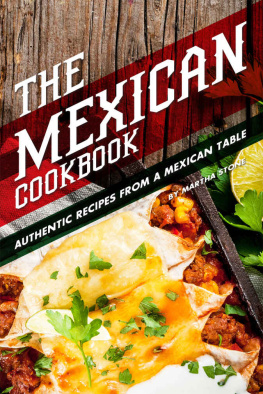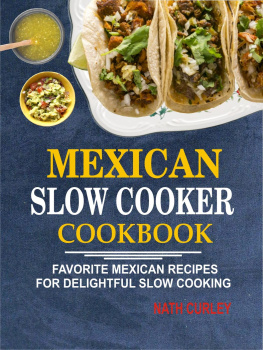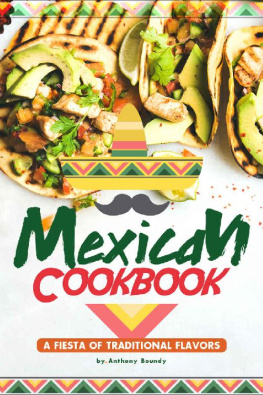MEXICAN COOKBOOK

The Authentic Taste and Flavors
of Mexican Cuisine
STEPHEN G.J.
Copyright 2020 by STEPHEN G.J.
A ll right reserved . No portion of this book may be reproduced, stored in a retrieval system, or transmitted in any form or by any means, electronic, mechanical, recording or otherwise except for brief quotation in printed reviews without the prior written permission of the publisher or the author.
CONTENT
E verything in this world has its own bit of history. There is much more to Mexican food history, but this has been a brief overview. Mexican food has a long history and diverse one. It is believed that authentic Mexican food might have been derived from the Mayan Indians. They were traditionally nomadic hunters and gatherers. Corn tortillas with bean paste were a common food item; but they also ate wild game, tropic fruits, and fish.
In the mid 1300's, The Aztec Empire was thriving, and though the Mayan food staples were still in use, chili peppers, honey, salt and chocolate found its way into their cooking. Some of the wild game, such as turkey and duck, had now become domesticated.
In 1521 Spain invaded Mexico. Spanish foods had the most influence on the Mexican cuisine. They introduced new livestock, such as sheep, pigs and cows. They brought with them dairy products, and garlic as well as many different herbs, wheat and spices. It was at this time that the Mexican people saw the assimilation of many other cuisines including Caribbean, South American, French, West African and Portuguese. Because of this Mexican foods today are diverse, yet dishes to vary from region to region.
The early natives of Mexico did not have ovens, instead they heated food over and open fire, using cast iron skillets and ceramic ware. Another method was steaming. They would suspend meat wrapped in cactus or banana leaves, over boiling water in a deep pit. Frying was also a popular method.
They used a metate y mano, which is a large tool made of lava rock or stone that they would use as a grinding stone or the molcajete, which was smaller, to grind and smash ingredients. The molcajete, or mortar and pestle, is a small bowl shaped container that can be made of stone, pottery, hard wood or marble, and the pestle is baseball bat shaped.
Today Mexican Cuisine is a nice blend of the indigenous and Spanish cuisine. It is still based in beans, corn, tortillas, and chile peppers, but these are now usually served with some sort of meat and cheese. Most dishes come with some sort of rice and spices as well, a clear nod to the European influence. Since the colonization many cuisines have influenced Mexican Food, including French. The French intervened in Mexico in the 19th century, and their food was enjoyed by the upper class even after they left.
I n Mexico, there are a couple of essential items that people often have in their pantries, including rice, dried pasta, flour, masa harina, dried beans, sugar, and oil. Canned items include canned tuna, pickled jalapeos, a can of chipotles in adobo, and perhaps some canned black beans. These are all items that are cheap, versatile, and mostly non-perishable. Below is recommended ingredients list to keep some of them in your kitchen.
Chili peppers: One of the first things that may come to mind when you think of Mexican food are chilies, which makes sense considering chilies are indigenous to Mexico and have been part of the cuisine for thousands of years. Mexican food has a reputation for being very spicy, but it has a wide range of flavors and while many spices are used for cooking, not all are spicy. Many dishes also have subtle flavors. Chiles are indigenous to Mexico and their use dates back thousands of years. They are used for their flavors and not just their heat, with Mexico using the widest variety. If a savory dish or snack does not contain chile pepper, hot sauce is usually added, and chile pepper is often added to fresh fruit and sweets. The importance of the chile goes back to the Mesoamerican period, where it was considered to be as much of a staple as corn and beans. In the 16th century, Bartolom de las Casas wrote that without chiles, the indigenous people did not think they were eating. Even today, most Mexicans believe that their national identity would be at a loss without chiles and the many varieties of sauces and salsas created using chiles as their base. Many dishes in Mexico are defined by their sauces and the chiles those sauces contain (which are usually very spicy), rather than the meat or vegetable that the sauce covers. These dishes include entomatada (in tomato sauce), adobo or adobados, pipians and moles. A hominy soup called pozole is defined as white, green or red depending on the chile sauce used or omitted. Tamales are differentiated by the filling which is again defined by the sauce (red or green chile pepper strips or mole). Dishes without a sauce are rarely eaten without a salsa or without fresh or pickled chiles. This includes street foods, such as tacos, tortas, soup, sopes, tlacoyos, tlayudas, Gorditas and sincronizadas. For most dishes, it is the type of chile used that gives it its main flavor. Chipotle, smoked-dried jalapeo pepper, is very common in Mexican cuisine.
Beans: Another widely used ingredient is beans or frijoles, and it would be hard to find any Mexican kitchen without a variety stocked in the pantry. You be familiar with black beans and pinto beans, but there are also plenty of other brownish and black beans, like golden Peruvian and flor de junio. They are used to make dishes such as refried beans, bean salads, soups, and the traditional dish frijoles de olla (Mexican pot beans).

C orn: Despite the introduction of wheat and rice to Mexico, corn is the most commonly consumed starch in almost all areas of the country and serves as the main ingredient in many local recipes (e.g. corn, tortillas, atole, pozol, menudo, tamal). While it is eaten fresh, most corn is dried, nixtamalized and ground into dough called masa. This dough is used both fresh and fermented to make a wide variety of dishes from drinks (atole, pozol, etc.) to tamales, sopes, and much more. However, the most common way to eat corn in Mexico is in the form of a tortilla, which accompanies almost every dish. Tortillas are made of corn in most of the country, but other versions exist, such as wheat in the north or plantain, yuca and wild greens in Oaxaca.
Next page
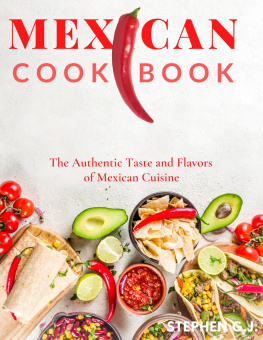

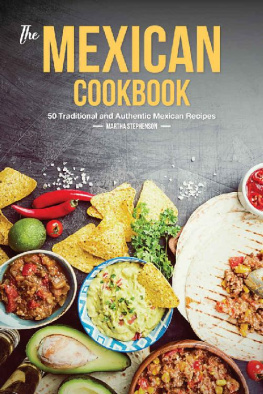
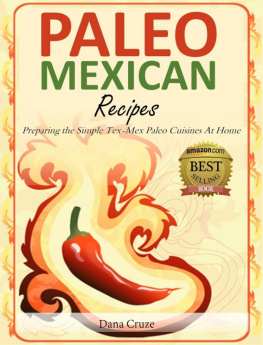
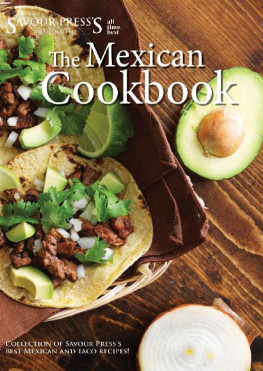
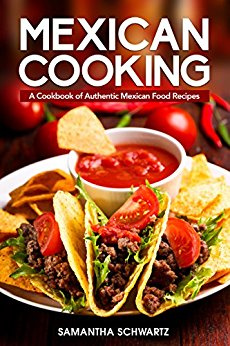
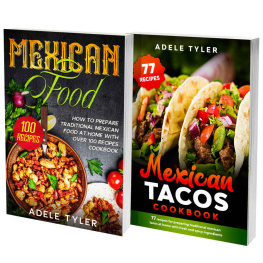
![Avery Moore - Mexican Cookbook 365: Tasting Mexican Cuisine Right In Your Little Kitchen! (Best Mexican Cookbook, Mexican Dessert Cookbook, Slow Cooker Mexican Cookbook, Mexican Salsa Cookbook) [Book 1]](/uploads/posts/book/288399/thumbs/avery-moore-mexican-cookbook-365-tasting-mexican.jpg)
